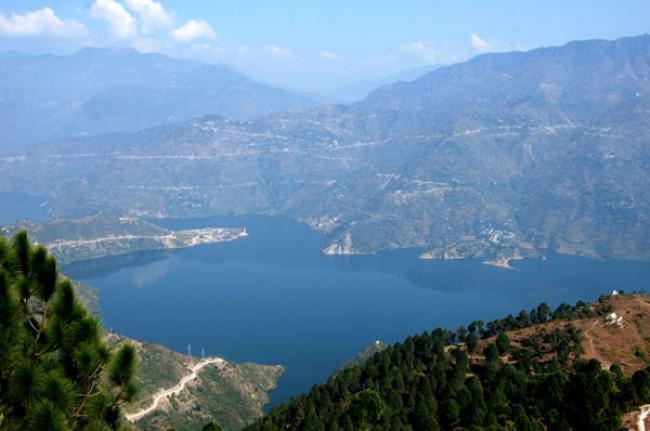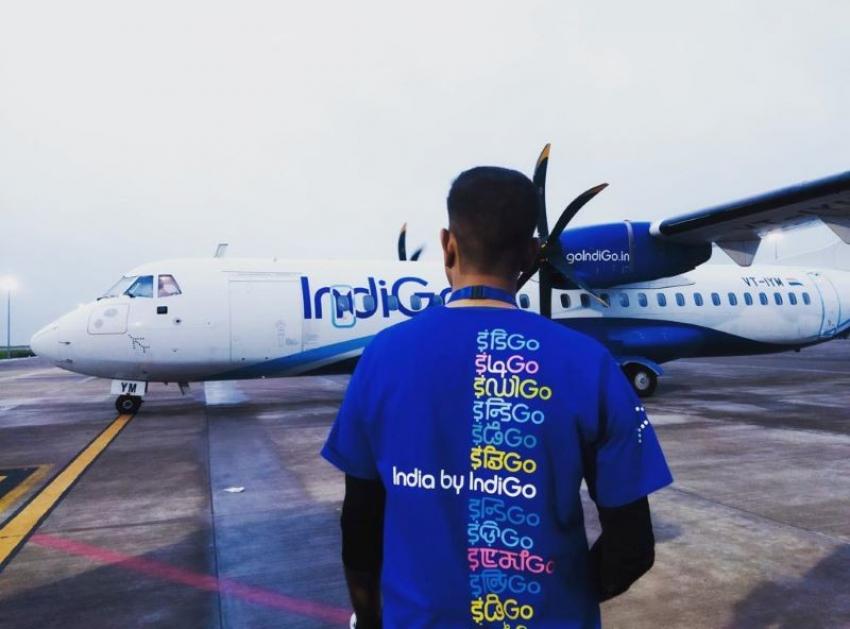Your Turn
First Person
Life by the Ganga: Uttarkashi
By Kingshuk Mukherji 12 Jan 2015, 08:12 am

November 26, 2014
Uttarkashi is a six-hour drive from Rishikesh up a road strung like a thread looped around a garland of hills. As it coils up the slopes, the Tehri reservoir is an awesome sight. You catch a glimpse of it from a height, a bird’s eye view of a blue bowl in a deep valley.
If spirituality isn’t your line of country, Uttarkashi could be a drag. The Ganga cuts through town. But I doubt if those who live here nourish it much. Like elsewhere, the city’s filth does go into the river. Ever forgiving, the Ganga seldom complains as it washes away waste from hotels, markets and homes.
Post the devastating Uttarakhand floods, the shattered embankments are being rebuilt now. Earthmoving machines scoop out silt and stones clogging the riverbed, deepening the channel. But the roads still bear scars of the deluge.
The Ganga roars through Uttarkashi. In earlier times the call of the river must have bounced off the imposing ring of green hills. Today, the rumble of heavy traffic drowns it. On quiet nights, when silence descends, you hear the gushing water grind the boulders it washes down.
This town has no pretense. It’s pretty much the way it appears – devout, spiritual, uncomplicated. The central bus stand is the nerve centre, a mad-mad place crawling with people, cars, buses, and eateries dishing out rajma-chawal-paneer meals. Hotels and dharamshalas, ashrams and shrines line the streets. This is a quintessential temple town, famous for its Vishwanath shrine and a proactive sadhu samaj that holds regular Geeta reading sessions. Uttarkashi is also the gateway to Gangotri.
It wouldn’t be an overstatement to say that every second building in Uttarkashi is either a shrine or an ashram. Sadhus, men and women in saffron, are a common sight. Someone must be thinking up fashion for them. And, I say this with reason. Days when sadhus covered their bodies in robes or loincloths are history. These days you’d catch many of them in saffron windcheaters, sneakers, pajamas and bandanas. But the men still sport flowing beards.
I am singularly unqualified to talk of their spiritual attainments, but I can nevertheless narrate my experiences with a couple of them. These are intensely private people and it’ll be best not to name or identify them.
One of them, a young man dressed in white, meets us at the government guest house. I’d refer to him as Bhai for convenience. Some years ago he was a fairly prosperous jeweler in faraway Bengal. Then one day, Bhai met a sadhu at a mela in the neighbourhood. Something got into him and he decided he wanted none of his present life. “I felt this irresistible pull, the attraction of the divine. I told Sadhu Maharaj I want to join you and go to the Himalayas.” The sadhu, who would become mentor and guide in Bhai’s spiritual journey, asked him if he was absolutely sure and if it’d be right to book his tickets. “Believe me, I had no second thoughts. I went home to inform my family and just about caught up with the Maharaj at Howrah station.” But how did his family react? “Those were intense moments. I won’t talk about them,” he said firmly shutting the door on that strand of conversation.
This young man has ever since lived in an ashram at Uttar Kashi, relentlessly pursuing his search for the divine. But even for a man such as him, it’s not just hours spent in endless meditation. Among his other duties, he ensures youngsters who stay at the ashram are provided for, they get to study, eat nutritious meals. He tends to senior monks, caters to their every need, escorts them to doctors, organizes the morning and evening prayer sessions and also handles guests who come calling at the ashram every second day. And, when does he get time to pray or meditate? “It’s a 24-hour day. You must make time for everything. Besides, it’s not just about meditating. Seva, unquestioning service and absolute devotion, are integral to spiritual awakening,” he explains.
This short, dark 40-something man wears his beard long and doesn’t yet wear the saffron garbs of a sadhu. He’s still in the process of imbibing total renunciation. It’s a gradual process and one who’s set out that way goes through various stages of spiritual refinement till one day he symbolically dedicates his bodily existence to the fire god, performs his last rites and liberates himself from every earthly binding. Our man too will reach there, all in good time. “An income-tax officer was among our ashram devotees. He was the one who insisted I too have a bank account, a PAN card and an Adhaar card. This is Kali Yuga, in these times even men of religion need these things,” he says. But he never grumbles. Even when people talk to him roughly or are impolite, there’s not a twitch of irritation on his face. He’s ever smiling.
Bhai and I walk across to the Anandamayee Ashram. It’s a modest complex with a quadrangle and a Kali temple that radiates warm, welcoming vibes and godly energy. The guru’s personal quarters are open to devotees. Her bedchamber is simple, non-ostentatious. Mellow morning light filters through curtained windows. A large photograph of the Holy Mother rests on the bed she once used. It’s a room adorned with lots of flowers.
The sanyasi in charge of the ashram is a tall man, his eyes intense, gaze pure and humility unbelievable. He appears to have experienced divine grace – the disarming smile on his face says so. He’s an eternal giver and piles us with apples, chocolates and snacks.
Next door from the ashram is a ghat where the last rites of sadhus are performed. When the life of a realized soul ends, the custom, I am told is not to cremate him or her. This sadhu attains Samadhi, on reaching such a state, the holy one’s mortal remains are kept sitting and immersed into the Ganga anchored to heavy boulders allowing the remains to slip easily into the waters.
Bhai keeps the commentary going as he takes me around. He says he plans to go back to the Narmada river soon. “The Narmada Parikrama is what my heart is set on now. It’s a difficult pilgrimage but I’m bent on completing the circuit. You set out along the course of the holy river – start at its origin and journey on foot till the point where river meets sea. You aren’t allowed to cross the Narmada at any stage and survive on alms – whatever God gets for you. It’s an amazing experience and the Almighty ensures you’re provided for. I’ve done it once, I’ll do it again,” he says. His eyes light up childlike. But does Bhai not expect anything in return for what he does for humanity? “Never. We serve Narayana, the Divine Father. It’s all dedicated to him. And, he’s in all of us,” he signs off.
At night, he’s back at the ashram supervising dinner. Steel plates are laid out on wooden tables. After the frugal, but tasty meal is ladled out, it’s time to eat and chat. Rice, chapattis, Dal and two veggie dishes, topped up with dessert – that’s dinner. The happiness I see all around is infectious. These are people striving for something deeply spiritual. But their ways are just as uncomplicated as they are.
(The writer is an Associate Editor with a leading Indian English daily and a passionate traveller)
Courtesy: https://kingshukmukherji.
Visit the original source at: https://kingshukmukherji.
More Your Turn
- Dia Mirza says JapanSurprises
- Shikhar Dhawan un-discovers Australia
- Journey through the frames of India
- Anthony Bourdain: The man who inspired me to move
- Pleasure of leisure
- Want to have best train ride? Visit Thailand!
- Lamp with 1001 wicks lighted in Bhopal
- Bhagoriya marks festivity of holi in tribal parts of Madhya Pradesh
- New York: Parks parks parks - from Hudson to East River
- Celebration on the streets of New York
Toronto to Rio: Air Canada ...
Air Canada has introduced a new non-stop route connecting Toronto with Rio de Janeiro, with the first flight landing in the Brazilian city on Friday morning.
Air India's partnership wit ...
Air India, India’s leading global airline, and Maldivian, the national airline of the Maldives, have entered a bilateral interline partnership aimed at boosting connectivity between the two countries.
Massive meltdown at IndiGo: ...
IndiGo, India’s largest airline, is grappling with one of its most severe operational crises in recent years, with widespread flight delays and cancellations disrupting travel across the country for a second consecutive day.





